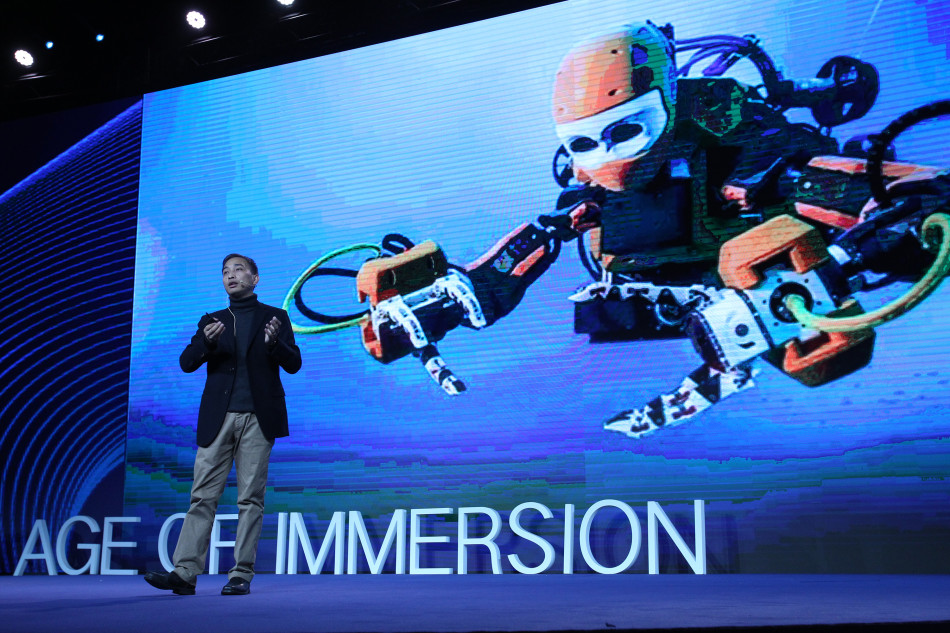Immersive media billed as future of communication

Zhou Xiaopeng, editor-in-chief of Sina News, delivers a speech at the 2016 Sina Future Media Summit held on Oct. 26 in Beijing.
The 2016 Sina Future Media Summit was held by Sina, one of China’s leading Internet media giants, on Oct. 26 in Beijing.
Themed “Welcome to the Age of Immersion,” the summit explored the possibilities and changes that the “Age of Immersion” has brought to the media industry and information dissemination.
Despite the constant development of media technology and changes in the way media present news content, the media have never changed their purpose of presenting the audience with an immersive experience of a news event. Immersive media refers to an immersive experience gradually made possible by technologies like virtual reality (VR) and augmented reality (AR).
At the summit, scholars summed up three key technological issues that remain unresolved for the coming age of immersive media: First, in order to make the news reporting more immersive, the form of information sharing should be transformed to experience sharing, which requires that the tremendous amount of information on the reporting end be conveyed more sufficiently to the audience.
Secondly, it is vital to make sure that the media are immersed in the news events that are happening now. Last of all, audience participation is at the core of “immersive media,” and that requires further innovation of technologies to provide better participation.
For example, in the investigative story “Seafood from Slaves” by the Associated Press, which won the 2016 Pulitzer Prize for Public Service, media technologies such as data analyses, satellite technologies, and live videotaping were used. It is a successful case where a news report presented the audience with an immersive experience of the event.
The application of modern technology and the artistic presentation in the “age of immersion” allows people to become more immersed in the news report. The word “immersion” refers to not only the immersive experience of the audience but also the immersive attitude of the people in the media industry when reporting on a news event, said Shen Hao, an associate professor of journalism from Communication University of China.
Live video streaming and VR are currently two popular topics in immersion media. Live video streaming has enduring popularity for users, posing a challenge to traditional news communication, said Shen Yang, a professor of journalism from Tsinghua University, adding that more media professionals will turn to new media.
In regard to the impact of VR, Kevin Geiger, executive director at the International Animation and VR Research Center of the Beijing Film Academy, said VR technology enables the producers to have more direct interaction with the audience. In addition, the AR technology will also have a great potential and future for application in news media, he said.
In the age of immersion, it is a vital challenge to capture and stretch the users’ attention span by providing a good experience, which is still elusive despite the development of technology in the media industry.
Song Jianwu, a professor of journalism from the Renmin University of China, said communication in the new media age is more targeted, and users have replaced audiences in the Internet Age. A new form of communication that is characterized by individualized services is replacing traditional mass media, he said.
Hou Li is a reporter at the Chinese Social Sciences Today.
